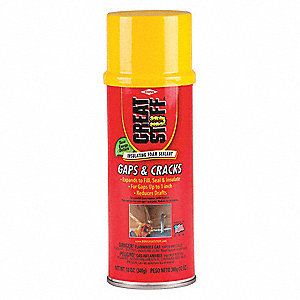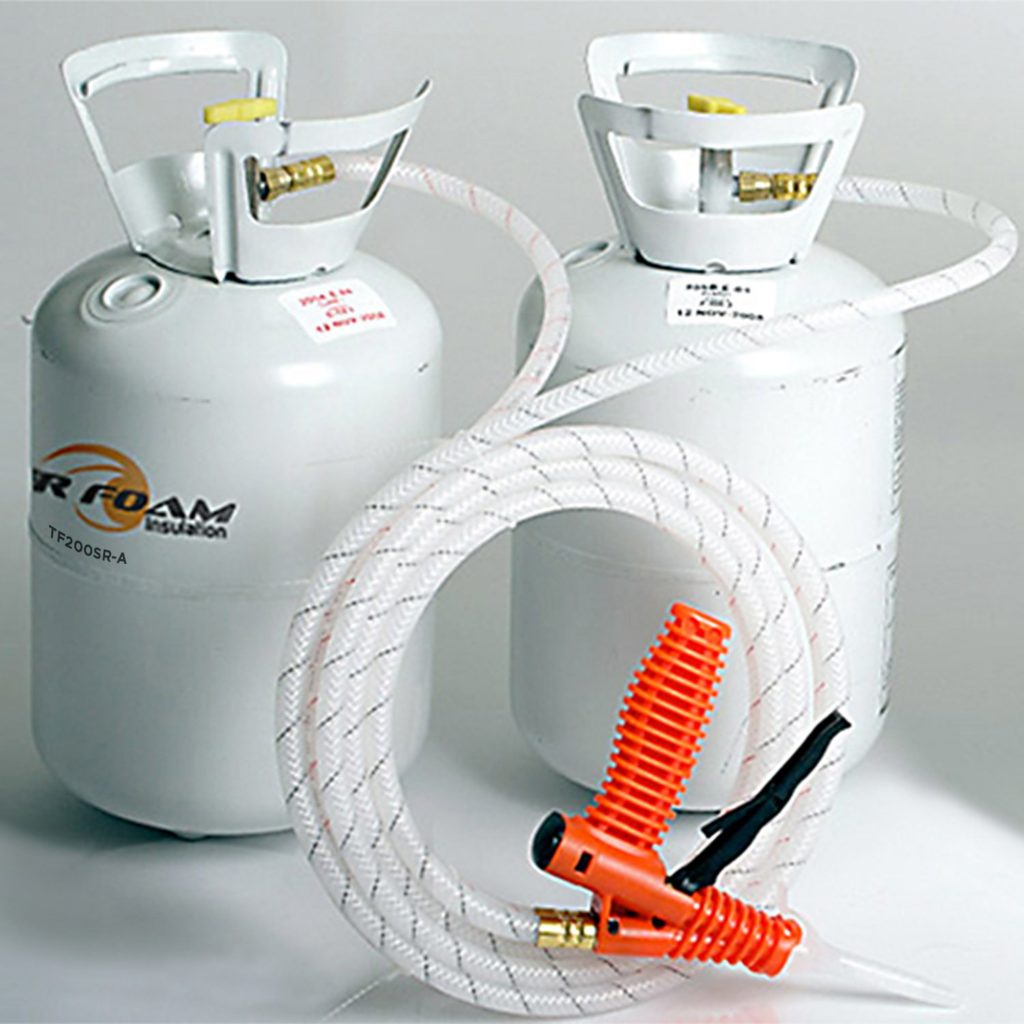EnergyStar.gov says the average home has a half mile of gaps and cracks where foam insulation could prevent air and moisture from entering your home.
Air sealing, tankless water heaters and insulating projects around the home can typically save homeowners up to 30% on home energy costs, according to the Residential Energy Services Network (RESNET).
Whether you’re attempting to cover the entire attic, cover a pipe or plug a hole, expandable foam insulation is a viable choice. Important Step – use the correct type and the right application for the job.
Open Cell vs Closed Cell
In the simplest explanation, spray foam insulation is referred to as open cell or closed cell because of the difference between the small bubbles (cells) that make up the insulation.
Open cell foam is full of cells that aren’t completely encapsulated. In other words, the cells are deliberatly left open. This makes the foam a softer, more flexable material.
Closed cell foam is made up of cells that are, as the name suggests, completely closed. The cells are pressed together, so air and mositure are unable to get inside the foam. Because of this, closed cell foam is much more rigid and stable than open cell foam.
Closed cell foam has a higher R-value than open cell foam, usually about R6.0 per inch. It’s also much more dense, weighing about 1.75 pounds per cubic foot.

Benefits of Closed Cell Foam
Closed cell foam is the best choice for robust insulating where space is an issue, as it can achieve 2x the R-Value of open cell inside a standard wall. Its rigid nature also adds to the structural integrity of the building. The closed cell also acts as a vapor barrier, so water and moisture will be less likely to get inside the home, and the foam itself is unharmed by water damage. Canned foam like GREAT STUFF™ is a closed–cell “single-component” form.
Benefits of Open Cell Foam
One of the biggest benefits of open cell foam is that it expands so much after it has been applied, meaning it can insulate hard to reach nooks and crannies in a home. These types of areas can be hard to insulate with closed cell foam. Open cell foam is excellent for soundproofing where a single application can completely fill the area between studs.
See which states follow current energy codes.

Vent Hood Fire Block

I often find the smooth vent pipe that passes through the drywall and up through the attic to vent the range hood isn’t sealed to the drywall. GreatStuff FireBlock will help seal this important gap. It’ll fill holes up to 6 inches wide.
The photo shows a hole in the insulation beside the metal pipe. I could actually see the top of the cabinets in the kitchen below. The hole is a fire hazard and an indoor air quality breach.
See the building codes that address fire blocking in residential buildings [R302.11 Fireblocking].
Covering Your Attic
The closed–cell foam that contractors use on large-scale spray foam jobs is also known as “two-component” foam or polyurethane foam.
It’s great for retrofit – drill and fill behind existing drywall or plaster and lathe or any pour in place, ditch or mold released applications.

The packaging, delivery system, and components were designed to be user and environmentally friendly. These systems are both portable and disposable.
They are completely self-contained to provide flexibility in end use performance. It can assist in attaining LEED and/ or ENERGY STAR Certification.
I can quickly tell when the homeowner doesn’t get their money’s worth when I inspect a foam insulated attic.
I know something’s wrong when it’s hot up there. In a properly insulated spray foam attic the temperature in the attic won’t be much higher than the house temperature.

HANDYMAN MAINTENANCE TIP:

Spray foam insulation [GreatStuff] works great to seal a wet A/C condensate trap in the attic.
The trap often contains cool water. It’s cool because it’s flowing from the air conditioner drain pan. When the cool water condenses on the plastic pipe it can then drip onto the ceiling below. If left the volume of water is high enough, you may believe you have a roof leak – when actually – it’s simply a wet pvc pipe in a hot attic.

Place a small plastic or styrofoam bowl below the trap and thoroughly cover the trap with closed cell spray foam. If you use open cell the water will potentially drip through the foam. Don’t forget to wipe the pipe down to remove any dust, dirt, mold and debris before spraying.
I found it interesting that you state that closed-cell foam is best for places where space is an issue. My brother is building a new house and wants to make sure he uses the right materials for it. I will send him this information so he can make sure to find an insulation contractor that can work with it.
Thank you for your great article on spray foam insulation! I don’t know what kind of spray foam insulation to choose for my home. I will definitely utilize all of your great tips and information when trying to choose the best spray foam insulation.
We need to get some spray foam done. I’ll want to find the right kind. Going with a closed cell type seems like the better choice.
It’s good to know that using open cell foam makes a softer and more elastic material since it insulates hard-to-insulate areas. I assume that homeowners want to protect their equipment from direct heat and cold that’s why they are on the search for insulation services that can provide what they need. It seems like hiring an insulation contractor with an open cell spray foam service can help homeowners with issues concerning walls that need soundproofing.
There is nothing like making the right choice and this blog makes it so much easier. Great thoughts. Thank you
I live in a cold climate (Minnesota) and am wondering if I could use cans of Great Stuff closed cell foam as the insulation in the 2 x 6 cavity. I thought I’d put it on by doing a layer at a time. Probably sounds odd, but I have access to the product at cost. Advice would be appreciated. Thanks!